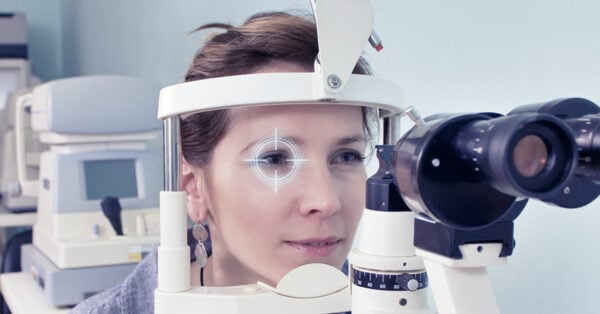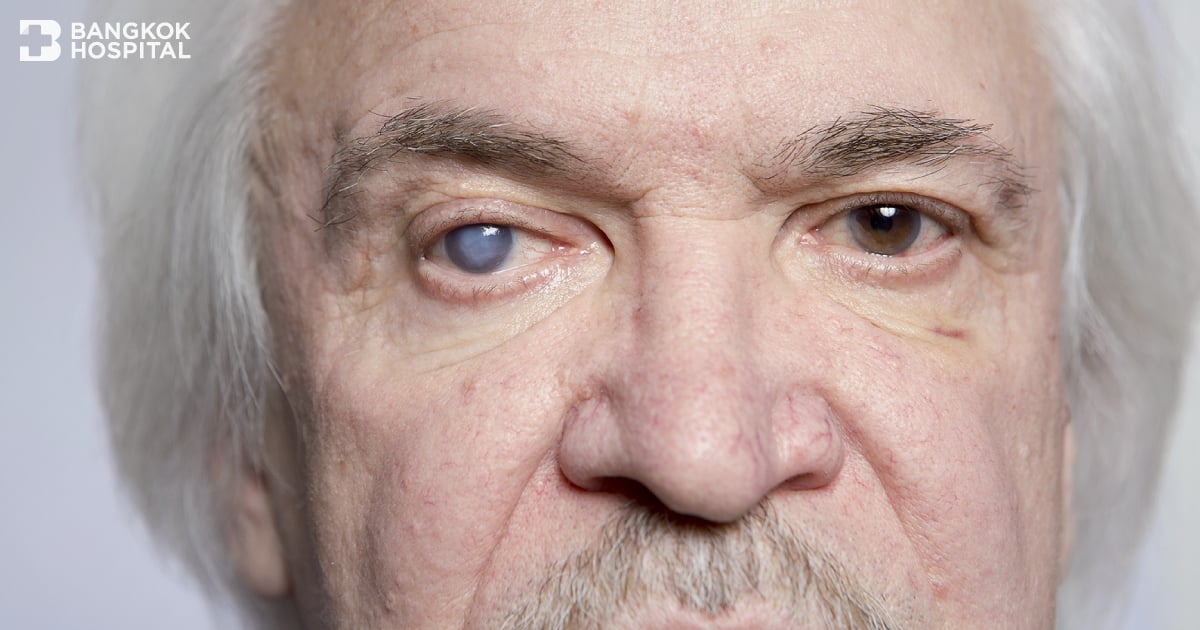Glaucoma is one of the leading causes of blindness for the elderly although it can occur at any age. Glaucoma is a group of eye conditions that optic nerve is permanently damaged mainly due to an abnormally high pressure in the eye. Several types of glaucoma sometimes have no warning signs and symptoms. The manifestations develop gradually that patients may not notice a change in vision until the condition progresses to an advanced stage. Since vision loss induced by glaucoma is irreversible, it is vitally recommended to have regular eye exams including measurements of intraocular pressure, allowing a diagnosis to be made in its early stages and treated appropriately. If glaucoma is detected early, vision loss can be prevented or delayed.
Myth: All patients diagnosed with glaucoma have elevated intraocular pressure.
Fact: It is not always true. Glaucoma is caused by the damages to the optic nerve. As this nerve slowly deteriorates, blind spots develop in the visual field. Frequently, this nerve damage is related to increased pressure in the eye. Elevated eye pressure happens due to a buildup of a fluid (called aqueous humor) that flows throughout the inside of the eye. Normally, this internal fluid drains out through a tissue called the trabecular meshwork at particular angle where the iris and cornea meet. When this fluid is overproduced or the drainage system does not function properly, the fluid cannot flow out at its normal rate. As a result, eye pressure subsequently increases. Although it is believed that an elevated eye pressure is the major cause of glaucoma, some patients with glaucoma do not experience high intraocular pressure which is called normal-tension glaucoma. In normal-tension glaucoma, the optic nerve becomes damaged even though eye pressure falls within the normal range. Certain reasons might involve a sensitive optic nerve and less blood supply to the optic nerve. This limited blood flow could be caused by impaired circulation e.g. atherosclerosis, the buildup of fatty deposits in the arteries.
Myth: Glaucoma is only found in the elderly.
Fact: Glaucoma is one of the leading causes of blindness, especially in elderly people. In fact, glaucoma can occur at any age including newborns and children accompanied with other eye conditions or physical abnormalities. Glaucoma may be present from birth or develop later in the first few years. The optic nerve damage could be the result of drainage blockages and other underlying medical conditions.
Myth: Being Asian e.g. Thai has a greater risk to develop glaucoma, relatively compared to the westerners.
Fact: This is true. Glaucoma has been frequently found in Asian or Hispanic in comparison to the westerners. In Thailand, statistical data reviews that 1 in 6 Thais aged over 50 can develop glaucoma.
Myth: If left untreated, cataract can progress and turn to be glaucoma.
Fact: Cataract does not directly involve glaucoma. A cataract is a clouding of the normally clear lens of the eye. The lens, where cataract forms, is positioned behind the colored part of the eye, known as iris. The lens focuses light that passes into the eye, producing clear and sharp images on the retina which is the light-sensitive membrane in the eye. In advanced age, the lenses become less flexible, less transparent and thicker. Age-related and other medical conditions cause tissues within the lens to break down and clump together, clouding small areas within the lens. As the cataract continues developing, the clouding turns to be denser and involves a bigger part of the lens. A cataract scatters and blocks the light passing through the lens, preventing a sharply defined image from reaching the retina. As a result, vision becomes blurred. Glaucoma and cataract, however, share common risk factors including increasing age, high blood pressure, diabetes and previous eye injury. Since both cataracts and glaucoma can be a natural part of the aging process. Many people aged over 60 may have both conditions.
Myth: Spending too much time looking at a computer screen raises the risk of glaucoma.
Fact: Even though the scientific evidence has not been firmly found that heavy use of computer is one of the causes of glaucoma, spending hours staring at a computer screen may potentially raise the risk of glaucoma, particularly if patients are nearsighted. The association between nearsightedness (myopia) and visual field defects may represent an increased risk of glaucoma.
Myth: Glaucoma frequently causes eye pain.
Fact: The signs and symptoms of glaucoma vary among individuals depending on the type and stage. Certain forms of glaucoma do not exhibit warning signs at early stage. The symptoms might gradually present and notice in a vision change might not be noticed until the glaucoma progresses to an advanced stage and optic nerve has been damaged greater than 50%, presenting with blurred vision. There are 2 main types of glaucoma; open angle glaucoma and closed-angle glaucoma. Open-angle glaucoma is the most common type of the disease. The drainage angle formed by the cornea and iris remains open, but the trabecular meshwork is partially blocked. This causes pressure in the eye to gradually increase. While closed-angle glaucoma occurs when the iris bulges forward to narrow or block the drainage angle formed by the cornea and iris. As a result, fluid cannot circulate through the eye and pressure increases. Related symptoms may include eye pain, blurred vision, halos around lights and severe headache.
Myth: Glaucoma is hereditary.
Fact: Glaucoma tends to run in families. In some people, scientists have identified genes potentially related to high eye pressure and optic nerve damage. Therefore, people with family history of glaucoma have a relative risk of 5-6X to develop glaucoma, compared to people with the absence of family history. In this group, therefore, an early eye exam is highly needed in order to screen and detect glaucoma even without warning signs.












